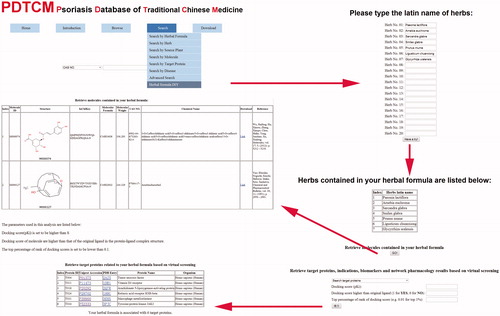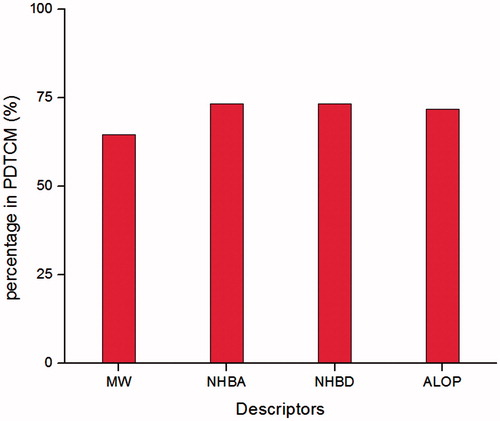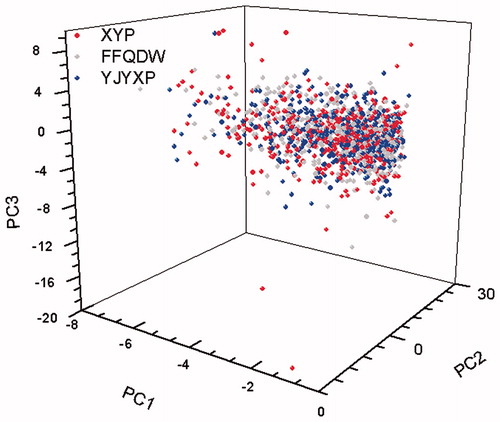Abstract
Introduction: Psoriasis is a refractory skin disorder, and usually requires a lifetime control. Traditional Chinese medicine (TCM) is effective and safe for this disease. However, the cellular and molecular mechanisms of TCM remedies for psoriasis are still not fully understood. TCM contains numerous natural products. Natural products have historically been invaluable as a resource of therapeutic agents. Yet, there is no integrated information about active compounds of TCM for psoriasis.
Method: We use systems pharmacology methods to develop the Psoriasis Database of Traditional Chinese Medicine (PDTCM). The database covered a number of psoriasis-related information (formulas, TCM, compounds, target proteins, diseases and biomarkers). With these data information, an online platform was constructed
Results: PDTCM comprises 38 empirical therapeutic formulas, 34373 compounds from 1424 medicinal plants, 44 psoriasis-related proteins and 76 biomarkers from 111 related diseases. On this platform, users can screen active compounds for a psoriasis-related target and explore molecular mechanisms of TCM. Accordingly, users can also download the retrieved structures and data information with a defined value set. In addition, it helps to get a better understanding of Chinese prescriptions in disease treatment.
Conclusion: With the systems pharmacology-based data, PDTCM would become a valuable resource for TCM in psoriasis-related research.
PDTCM platform comprises a great deal of data on TCM and psoriasis.
On this platform, users can retrieve and get needed information with systems pharmacology methods, such as active compounds screening, target prediction and molecular mechanisms exploration.
It is a tool for psoriasis-related research on natural drugs systematically.
Key messages
1. Introduction
Psoriasis is a chronic recurrent cutaneous disorder and usually persists for life [Citation1,Citation2]. Psoriatic lesions are frequently itchy or painful, or both. It is probably the most prevalent immune-mediated skin disease in adults and affects approximately 2% of people worldwide [Citation3,Citation4]. At least 10% of patients developed irreversible damage to articular cartilage [Citation5]. Psoriasis suffers report an impairment of their quality of life, because of the unsightly appearance of erythematous scaly skin lesions [Citation6].
Natural products (NPs) are the important source of drugs [Citation7,Citation8]. For example, methotrexate, psoralen plus ultraviolet A, cyclosporin and acitretin are from a NP or a modified NP, which are widely used for systemic therapeutic options [Citation9]. However, they were not highly satisfactory [Citation10]. Patients using biologic agents reported satisfaction with their treatment, but biologics cost much more than other systemic remedies and also require repeated injections [Citation11,Citation12]. Evidence from systematic reviews has shown the efficacy of traditional Chinese medicines (TCM) in psoriasis treatments [Citation13,Citation14], and TCM is a popular complementary therapy in western countries [Citation15–17]. It is well known that TCM is all from nature, containing abundant natural products. NPs are a valuable resource of new drug candidates. As the quality of leads arising from NP discovery is better and more biologically friendly [Citation18], scientists strongly suggested that expanding the exploration of NP as a crucial source of novel active agents for disease indications [Citation19–21].
Psoriasis is a worldwide refractory disease. Our team has been focusing on herbal treatment for psoriasis over the years. On clinical and basic research, we found that TCM formula could reduce recurrence rate and regulate the pathogenesis pathways [Citation22,Citation23]. Inspired by the significant sources of approved drugs derived from NPs in drug discovery, we designed and established the Psoriasis Database of Traditional Chinese Medicine (PDTCM) with systems pharmacology-based methods, such as high throughput virtual screening and network analysis. The database comprised 34373 compounds from plants, animals and microorganism. To our knowledge, PDTCM is the first non-commercial and freely available database for natural psoriatic drugs (http://cadd.gdhtcm.com:2180/PDTCM/). On this platform, we compared TCM and approved clinical psoriatic drugs, and try to explain mechanisms of natural drugs in psoriatic treatment from the view of complex networks in systems pharmacology. It can also provide clues and ideas in exploring perspective and effective TCM for psoriasis.
2. Materials and methods
2.1. Data collections
PDTCM comprises eight data entities including herbal formulas, TCM, source plants/animals, molecules, target proteins, docking results between all molecules and target proteins, diseases and clinical biomarkers. The herbal formulas were selected from classical literature of TCM and monographs by senior famous TCM physicians, which were used for treating “Wan xuan”, “Bai bi”, “Niu pi xuan” and “Yin xie bing”. TCM was collected by keywords involved in psoriatic features, such as inflammation or inflammatory skin diseases, dermatitis, immune, angiogenesis, keratosis and proliferation. The TCM’s latin names were retrieved from Chinese Materia Medica and Chinese Pharmacopoeia in parts of indications, pharmacological effects or clinical applications. The components of TCM were collected from Reaxys, Chinese Natural Product Database [Citation24], Traditional Chinese Medicines Database [Citation25] and Chinese Herbal Drug Dasabase [Citation26]. The 3D structures of compounds were obtained from the Universal Natural Products Database (UNPD) [Citation27]. Targets of psoriasis and approved drugs were retrieved from DrugBank (http://www.drugbank.ca) [Citation28], Uniprot (http://www.uniprot.org) and TTD (http://bidd.nus.edu.sg/BIDD-Databases/TTD/TTD.asp) [Citation29]. The information of diseases, clinical biomarkers related to psoriasis targets and their relationship with target proteins were collected from KEGG [Citation30], OMIM (http://www.ncbi.nlm.nih.gov/omim).
2.2. Chemical space and drug-likeness analysis
Molecular descriptors of the molecules in PDTCM and 10 approved drugs coming from NPs and modified NPs (calcipotriol, clobetasol, salicyclic acid, etretinate, tazarotene, fluticasone propionate, desoximetasone, alitretinoin, acitretin and calcitriol) were calculated by Discovery Studio by using default parameters (). Eight descriptors: lipo-hydro partition coefficient (AlogP), molecular weight (MW), molecular fractional polar surface area, number of hydrogen bond donors (NHBD), number of hydrogen bond acceptors (NHBA), number of rotatable bonds, number of rings and number of aromatic rings were selected to build the chemical space. Principal component analysis (PCA) was conducted in the library analysis module of Discovery Studio to visualize the distributions of molecules and drugs in the chemical space. PCA between natural compounds and approved drugs was performed in two-dimension space.
Table 1. Statistics of molecular descriptors in PDTCM.
2.3. Molecular docking
Molecular docking is used as a standard computational tool in structure-based drug design [Citation31]. In order to screen potential active compounds, molecular docking was employed. The crystal or NMR structures of the target proteins listed in were downloaded from the RCSB Protein Data Bank (http://www.rcsb.org/pdb/home/home.do). The protein–ligand complex structures of target proteins were dealt with by removing the hetero atoms and adding hydrogen atoms. Then, molecular docking was performed by Autodock 4 in DOVIS 2.0 [Citation32]. For each target protein, the binding site was defined as a 40 × 40 × 40 Å cube centred on the occupied space of the original ligand with a spacing of 0.375 Å between the grid points. Based on the docking results, we constructed the molecule-target network (MTN) and calculated properties of nodes by Cytoscape 3.0.2 [Citation33].
Table 2. Targets related to psoriasis for molecular docking.
2.4. Lead compound discovery
Virtual screening (VS) is a computational approach to evaluate very large libraries of compounds, which has become an integral part in the process of drug discovery [Citation34]. With a manageable number of compounds filtered by VS, it helps to improve the efficiency of lead compound discovery and reduce the cost of experimental test in vitro and in vivo. Molecule docking is a method of VS based on the target structure. Docking scores are used to measure the binding affinity between molecules and targets [Citation35,Citation36]. Accordingly, those with high scores should be selected to further analysis and to be tested.
2.5. Case study: clinical prescriptions in Chinese Pharmacopoeia
Chinese Pharmacopoeia is an authoritative work in clinical and practical application. Fufang Qingdai Wan, Yujin Yinxie Pian and Xiaoyin Pian are the only three prescriptions recorded in Chinese Pharmacopoeia for psoriasis treatment (Supplementary Table S1). Therefore, we chose the three typical formulas as an example of usage. First, we retrieved the composed molecules and molecule-target interactions of each formula from PDTCM. With the extracted information, we plotted three formulas’ PCA in three-dimensional system, and constructed the MTNs, respectively.
3. Results and discussion
3.1. Content and utility
A total of 38 empirical formulas and 1424 TCM have been collected into PDTCM. In addition, the database comprises 3D structures of 34,373 compounds from 1424 TCM, and the interactions between compounds and target proteins. As a result, formulas, TCM, compounds, targets, target-related diseases and disease biomarkers are linked together on this platform. PDTCM has a concise and intuitive web interface equipped with five sections (Home, Introduction, Browse, Search and Download), and users can get information by screen taxonomy capturing. A retrieval system for molecules is available on the homepage. Users can query for exact compounds by the followings: (i) molecule ID, (ii) CAS number, (iii) chemical name, (iv) molecular formula, (v) canonical SMILES, (vi) InChIKey and (vii) natural source. The introduction page presents contents and functions of database. The browse section displays all of the empirical formulas, source plants, TCM, compounds, target proteins and diseases by classification. On the search part, users can get interactions between herbs, target proteins and diseases. Specifically, with a designed search module of herbal formula DIY, users can predict the material basis and active mechanisms of a herbal combination flexibly. For instance, to identify candidate drug targets and active compounds of a psoriasis therapeutic formula “PSORI-CM01” [Citation37], the steps are shown in . By submitting the parameters, formula’s target proteins and physicochemical properties of screened compounds were displayed, and structures could be downloaded by link.
3.2. Molecular properties and chemical space analysis between TCM and approved drugs for psoriasis
Molecular descriptors have been used to display structural diversity of a set of compounds with transformed chemical information [Citation38]. The chemical space contributed by molecular descriptors encompassed all possible small organic molecules [Citation39]. Wide distribution of molecules in the chemical space would enhance the opportunities to discover leads through similar occupancy with pharmaceuticals [Citation40]. lists the molecular descriptors of 34,373 compounds from 1424 TCM and psoriatic drugs. Obviously, statistical means and standard deviations of TCM were larger than those of approved drugs. Consequently, TCM would provide a basis for modulation of different biological targets, which was important for pharmaceutical product development [Citation41].
PCA can convert structural data into a new coordinate system by an orthogonal linear transformation method. PCA revealed the internal structural features between various classes of compounds in a graphic with the transformed original variables [Citation42]. To visualize the in chemical space, we plotted PCA. The data set for PCA comprised compounds from 1424 TCM and 10 psoriatic drugs (). displays a distinct visualization of distributed features of molecules in PDTCM and psoriatic drugs. The overlapped part in the PC1–PC2 projection suggested that the compounds in PDTCM would have a number of drug-like compounds with similar structures of psoriatic drugs.
Figure 2. Distribution in chemical space according to PCA of compounds in PDTCM and psoriatic drugs.
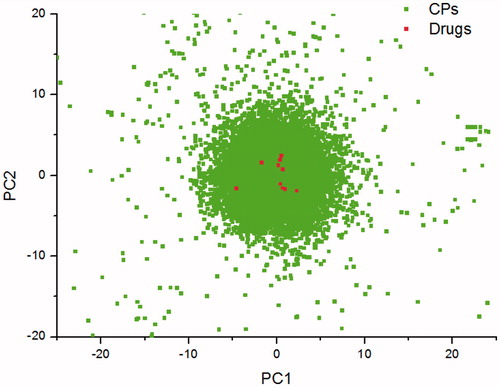
The drug-like space has been defined using cut-off values for permissible physical properties [Citation43–45]. Till now, Lipinski’s rule of five (Ro5) has been widely used as a classical methods to predict drug-like molecules, although some effective drugs do not obey Ro5 [Citation46]. The percentage of molecular properties in TCM that obey Ro5 is present in . shows more than a half of molecules met the range of each drug-like property, which implied TCM might have good oral bioavailability.
3.3. Lead compound discovery by virtual screening
TCM contains a vast number of NPs with biological activities [Citation47]. With the development of computer technology, high throughput virtual screening could be used to predict NPs’ biological activities [Citation48]. In order to promote the accuracy of predicted results and lower the complex degree of data handling, the threshold we set was that the docking score of a molecule was above 8.0, and higher than that of target’s original ligand. With the criterion we set, the docking results were extracted and MTN was constructed. displays the phenomenon of a compound targeting several proteins, and some compounds acting on a target. In detail, 643 nodes (605 molecules and 38 proteins) and 844 edges were constructed in the network (Supplementary Table S2). In MTN, a compound targeted an average of 1.4 target proteins and each target protein had 22.2 hits. Degree and betweenness centrality, both two parameters implied the pivotal nodes in a network. These nodes would be noteworthy for potential polypharmacologic compounds. presents molecules with high degree and betweenness centrality, such as M010178, M018782 and M026498. M010178 and M026498 were separated from Hypericum perforatum. M018782 was a compound isolated from Strychnos nux-vomica. Hypericum perforatum was confirmed for anti-inflammatory effects, and the extract could modulate the immune system by inhibiting tumour necrosis factor-alpha [Citation49,Citation50]. Studies had reported the biological activities of Sophora alopecuroides, Smilax china and S. nux-vomica in inflammatory skin diseases [Citation51–53]. For further validation, the compounds listed in should be further investigated.
Figure 4. Drug-target network of PDTCM. Notes: Triangle and dot represent molecules (n = 605) and targets (n = 38), respectively.
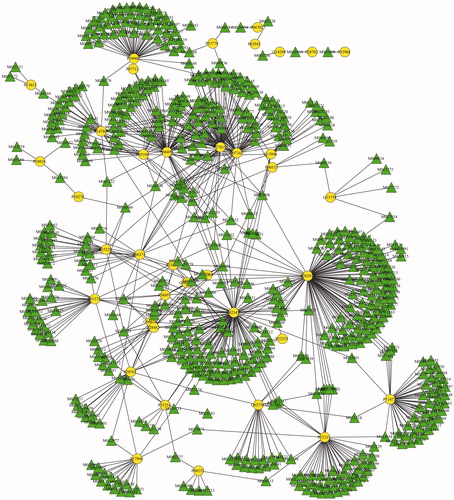
Table 3. Top rank of potential compounds for psoriasis according to degree and betweenness centrality of MTN.
3.4. Network pharmacology for clinical prescriptions
Traditional Chinese medicine focuses on the whole body and the prescription varies on the syndrome instead of a disease. It has been stated in Chinese Pharmacopoeia, that Fufang Qingdai Wan (FFQDW) can clear heat and reduce toxicity, which is used for progressive stage of psoriasis or blood-heat syndrome in TCM. Yujin Yinxie Pian (YJYXP) can promote blood circulation, which could be used for blood stasis syndrome. Xiaoyin Pian (XYP) can nourish blood and dispel wind, which is used for blood dryness syndrome. Constituent compounds and duplicate herbs of these formulas are listed in . Apparently only two ingredient herbs were the same at most between the two formulas. However, based on the graph of PCA, the large overlap indicated the existence of compounds with similar structures in the three formulas (). The overlap part suggested the consistency of all the three formulas for treating psoriasis according to structural features. The scattered parts might be aiming at psoriasis different syndromes. In order to explore molecular mechanisms of three clinical formulas, we constructed the interactions networks between their molecules and targets separately. Network analysis indicated that arachidonate 5-lipoxygenase-activating protein (ALOX5AP) was their collaborative target. ALOX5AP was required for arachidonic acid metabolite synthesis. Accordingly, arachidonic acid metabolism participated by ALOX5AP would be the three prescriptions’ common pathway for anti-inflammatory regulation.
Table 4. Three formulas information about composed compounds and duplicate herbs.
4. Conclusion and future directions
PDTCM is the first database that embraces a wide range of TCM, and systems pharmacology-based data between compounds and psoriatic target proteins. PDTCM has been designed not only to provide a platform for psoriatic lead compound discovery, but also to provide a better understanding of the molecular mechanisms of Chinese prescriptions. As a result, it helps to broad the formula’s indications and the application of TCM in disease treatment. In the course of new confirmed targets, PDTCM website data will be integrated and updated continuously. Future efforts will also replenish effective prescriptions from formal clinical trials, as well as the structures of newly discovered compounds from natural medicines. Based on the provided information, such as predicted compounds and refined formulas, experimental studies are still needed for users to validate the predictions. Overall, PDTCM is intended to be a long-term resource for users to obtain systems pharmacology data on psoriasis-related TCM.
Supplementary_Table_S2.xlsx
Download MS Excel (27 KB)Supplementary_Table_S1.xlsx
Download MS Excel (10.6 KB)Acknowledgements
The authors thank the whole team for assistance and fruitful discussions.
Disclosure statement
The authors report no conflicts of interest.
Additional information
Funding
References
- Griffiths CE, Barker JN. Pathogenesis and clinical features of psoriasis. Lancet. 2007;370:263–271.
- Elder JT, Bruce AT, Gudjonsson JE, et al. Molecular dissection of psoriasis: integrating genetics and biology. J Invest Dermatol. 2010;130:1213–1226.
- Christophers E. Psoriasis – epidemiology and clinical spectrum. Clin Exp Dermatol. 2001;26:314–320.
- Lowes MA, Bowcock AM, Krueger JG. Pathogenesis and therapy of psoriasis. Nature. 2007;445:866–873.
- Espinoza LR, Cuellar ML, Silveira LH. Psoriatic arthritis. Curr Opin Rheumatol. 1992;4:470–478.
- He Z, Lu C, Ou A, et al. Reliability and validity of the Chinese version of the Psoriasis Disability Index (PDI) in Chinese patients with psoriasis. Health Qual Life Outcomes. 2012;10:37.
- Newman DJ, Cragg GM. Natural products as sources of new drugs over the 30 years from 1981 to 2010. J Nat Prod. 2012;75:311–335.
- Harvey AL. Natural products in drug discovery. Drug Discov Today. 2008;13:894–901.
- Garcia-Perez ME, Stevanovic T, Poubelle PE. New therapies under development for psoriasis treatment. Curr Opin Pediatr. 2013;25:480–487.
- Nijsten T, Margolis DJ, Feldman SR, et al. Traditional systemic treatments have not fully met the needs of psoriasis patients: results from a national survey. J Am Acad Dermatol. 2005;52:434–444.
- Zhang M, Brenneman SK, Carter CT, et al. Patient-reported treatment satisfaction and choice of dosing frequency with biologic treatment for moderate to severe plaque psoriasis. Patient Prefer Adherence. 2015;8:777–784.
- D'Souza LS, Payette MJ. Estimated cost efficacy of systemic treatments that are approved by the US Food and Drug Administration for the treatment of moderate to severe psoriasis. J Am Acad Dermatol. 2015;72:589–598.
- Yu JJ, Zhang CS, Zhang AL, et al. Add-on effect of Chinese herbal medicine bath to phototherapy for psoriasis vulgaris: a systematic review. Evid Based Complement Alternat Med. 2013;2013:673078.
- Zhang CS, Yu JJ, Parker S, et al. Oral Chinese herbal medicine combined with pharmacotherapy for psoriasis vulgaris: a systematic review. Int J Dermatol. 2014;53:1305–1318.
- Jiang M, Yang J, Zhang C, et al. Clinical studies with traditional Chinese medicine in the past decade and future research and development. Planta Med. 2010;76:2048–2064.
- Lu C, Deng J, Li L, et al. Application of metabolomics on diagnosis and treatment of patients with psoriasis in traditional Chinese medicine. Biochim Biophys Acta. 2014;1844:280–288.
- Koo J, Arain S. Traditional Chinese medicine in dermatology. Clin Dermatol. 1999;17:21–27.
- Mishra BB, Tiwari VK. Natural products: an evolving role in future drug discovery. Eur J Med Chem. 2011;46:4769–4807.
- Cragg GM, Newman DJ. Natural product drug discovery in the next millennium. Pharm Biol. 2001;39(Suppl 1):8–17.
- Newman DJ, Cragg GM. Natural products as sources of new drugs over the last 25 years. J Nat Prod. 2007;70:461–477.
- Koehn FE, Carter GT. The evolving role of natural products in drug discovery. Nat Rev Drug Discov. 2005;4:206–220.
- Han L, Sun J, Lu CJ, et al. Formula PSORI-CM01 inhibits the inflammatory cytokine and chemokine release in keratinocytes via NF-kappaB expression. Int Immunopharmacol. 2017;44:226–233.
- Yao DN, Lu CJ, Wen ZH, et al. Oral PSORI-CM01, a Chinese herbal formula, plus topical sequential therapy for moderate-to-severe psoriasis vulgaris: pilot study for a double-blind, randomized, placebo-controlled trial. Trials. 2016;17:140.
- Shen J, Xu X, Cheng F, et al. Virtual screening on natural products for discovering active compounds and target information. Curr Med Chem. 2003;10:2327–2342.
- He M, Yan X, Zhou J, et al. Traditional Chinese medicine database and application on the Web. J Chem Inf Comput Sci. 2001;41:273–277.
- Qiao X, Hou T, Zhang W, et al. A 3D structure database of components from Chinese traditional medicinal herbs. J Chem Inf Comput Sci. 2002;42:481–489.
- Gu J, Gui Y, Chen L, et al. Use of natural products as chemical library for drug discovery and network pharmacology. PLoS One. 2013;8:e62839.
- Knox C, Law V, Jewison T, et al. DrugBank 3.0: a comprehensive resource for 'omics' research on drugs. Nucleic Acids Res. 2011;39:D1035–D1041. (Database issue)
- Yang H, Qin C, Li YH, et al. Therapeutic target database update 2016: enriched resource for bench to clinical drug target and targeted pathway information. Nucleic Acids Res. 2016;44:D1069–D1074.
- Kanehisa M, Goto S, Sato Y, et al. KEGG for integration and interpretation of large-scale molecular data sets. Nucleic Acids Res. 2012;40:D109–D114. (Database issue)
- Kalyaanamoorthy S, Chen YP. Structure-based drug design to augment hit discovery. Drug Discov Today. 2011;16:831–839.
- Jiang X, Kumar K, Hu X, et al. DOVIS 2.0: an efficient and easy to use parallel virtual screening tool based on AutoDock 4.0. Chem Cent J. 2008;2:18.
- Shannon P, Markiel A, Ozier O, et al. Cytoscape: a software environment for integrated models of biomolecular interaction networks. Genome Res. 2003;13:2498–2504.
- Abagyan R, Totrov M. High-throughput docking for lead generation. Curr Opin Chem Biol. 2001;5:375–382.
- McInnes C. Virtual screening strategies in drug discovery. Curr Opin Chem Biol. 2007;11:494–502.
- Li S, Zhang B, Zhang N. Network target for screening synergistic drug combinations with application to traditional Chinese medicine. BMC Syst Biol. 2011;5(Suppl 1):S10.
- Chen SD, Lu CJ, Zhao RZ. Identification and quantitative characterization of PSORI-CM01, a Chinese medicine formula for psoriasis therapy, by liquid chromatography coupled with an LTQ Orbitrap mass spectrometer. Molecules. 2015;20:1594–1609.
- El-Elimat T, Zhang X, Jarjoura D, et al. Chemical diversity of metabolites from fungi, cyanobacteria, and plants relative to FDA-approved anticancer agents. ACS Med Chem Lett. 2012;3:645–649.
- Dobson CM. Chemical space and biology. Nature. 2004;432:824–828.
- Rosen J, Gottfries J, Muresan S, et al. Novel chemical space exploration via natural products. J Med Chem. 2009;52:1953–1962.
- Bauer A, Bronstrup M. Industrial natural product chemistry for drug discovery and development. Nat Prod Rep. 2014;31:35–60.
- Wenderski TA, Stratton CF, Bauer RA, et al. Principal component analysis as a tool for library design: a case study investigating natural products, brand-name drugs, natural product-like libraries, and drug-like libraries. Methods Mol Biol. 2015;1263:225–242.
- Wenlock MC, Austin RP, Barton P, et al. A comparison of physiochemical property profiles of development and marketed oral drugs. J Med Chem. 2003;46:1250–1256.
- Hughes JD, Blagg J, Price DA, et al. Physiochemical drug properties associated with in vivo toxicological outcomes. Bioorg Med Chem Lett. 2008;18:4872–4875.
- Bade R, Chan HF, Reynisson J. Characteristics of known drug space. Natural products, their derivatives and synthetic drugs. Eur J Med Chem. 2010;45:5646–5652.
- Leeson P. Drug discovery: Chemical beauty contest. Nature. 2012;481:455–456.
- Clardy J, Walsh C. Lessons from natural molecules. Nature. 2004;432:829–837.
- Taboureau O, Baell JB, Fernandez-Recio J, et al. Established and emerging trends in computational drug discovery in the structural genomics era. Chem Biol. 2012;19:29–41.
- Lavie G, Meruelo D, Aroyo K, et al. Inhibition of the CD8+ T cell-mediated cytotoxicity reaction by hypericin: potential for treatment of T cell-mediated diseases. Int Immunol. 2000;12:479–486.
- Najafizadeh P, Hashemian F, Mansouri P, et al. The evaluation of the clinical effect of topical St Johns wort (Hypericum perforatum L.) in plaque type psoriasis vulgaris: a pilot study. Australas J Dermatol. 2012;53:131–135.
- Eldahshan OA, Abdel-Daim MM. Phytochemical study, cytotoxic, analgesic, antipyretic and anti-inflammatory activities of Strychnos nux-vomica. Cytotechnology. 2015;67:831–844.
- Yuan XY, Liu W, Zhang P, et al. Effects and mechanisms of aloperine on 2, 4-dinitrofluorobenzene-induced allergic contact dermatitis in BALB/c mice. Eur J Pharmacol. 2010;629:147–152.
- Vijayalakshmi A, Ravichandiran V, Malarkodi V, et al. Screening of flavonoid “quercetin” from the rhizome of Smilax china Linn. for anti-psoriatic activity. Asian Pac J Trop Biomed. 2012;2:269–275.

